Thursday morning, I have an 8:30 a.m. flight to Molokai and Kalaupapa National Historical Park. Kalaupapa contrasts striking natural beauty with the park’s profoundly sad story. The highest sea cliff in the world, varying from 1,600 feet at the point where a trail descends the cliff, to over 3,310 feet on the eastern side of the peninsula, isolates the Kalaupapa Peninsula on Molokai’s north coast from the main part of the island, called topside. The cliffs derive from a massive landslide between 1 and 1.5 MYA, during which a third of the island fell away. Rock from this landslide can be found on the ocean floor as far as forty miles north of the island. An offshore volcanic eruption between 230,000 and 300,000 years ago created the peninsula, two miles from the cliffs to the northern tip and two and a half miles wide at the base of the cliffs.
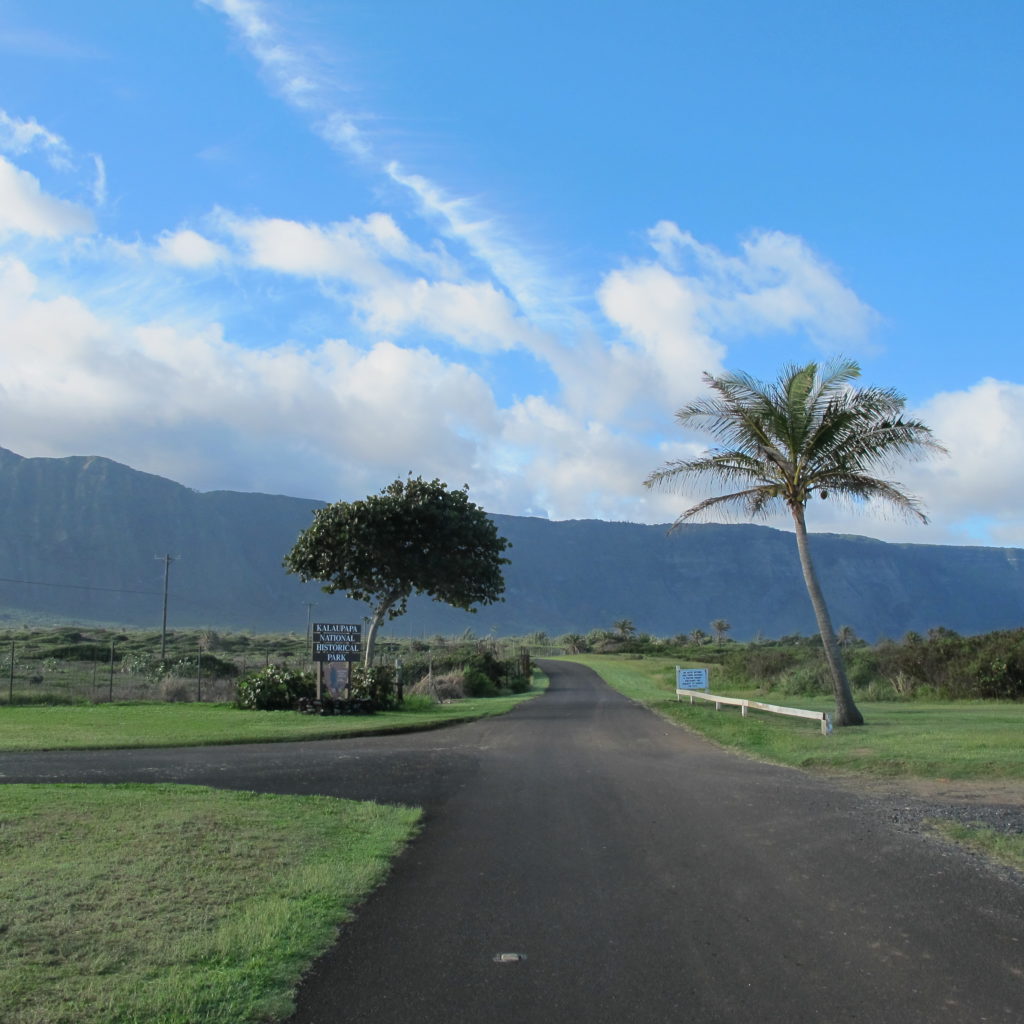
Kalaupapa from the peninsula’s airstrip
Beginning in 1866, officials arrested and involuntarily removed Hawaiians with Hansen’s Disease (leprosy) to this secluded location. Patients remained segregated in the colony until 1969, over twenty years after an effective treatment was discovered. Islanders thought of Kalaupapa as a place where people came to die with no reprieve. Nearly eight thousand Hawaiians perished in isolation here over the colony’s 103 years.
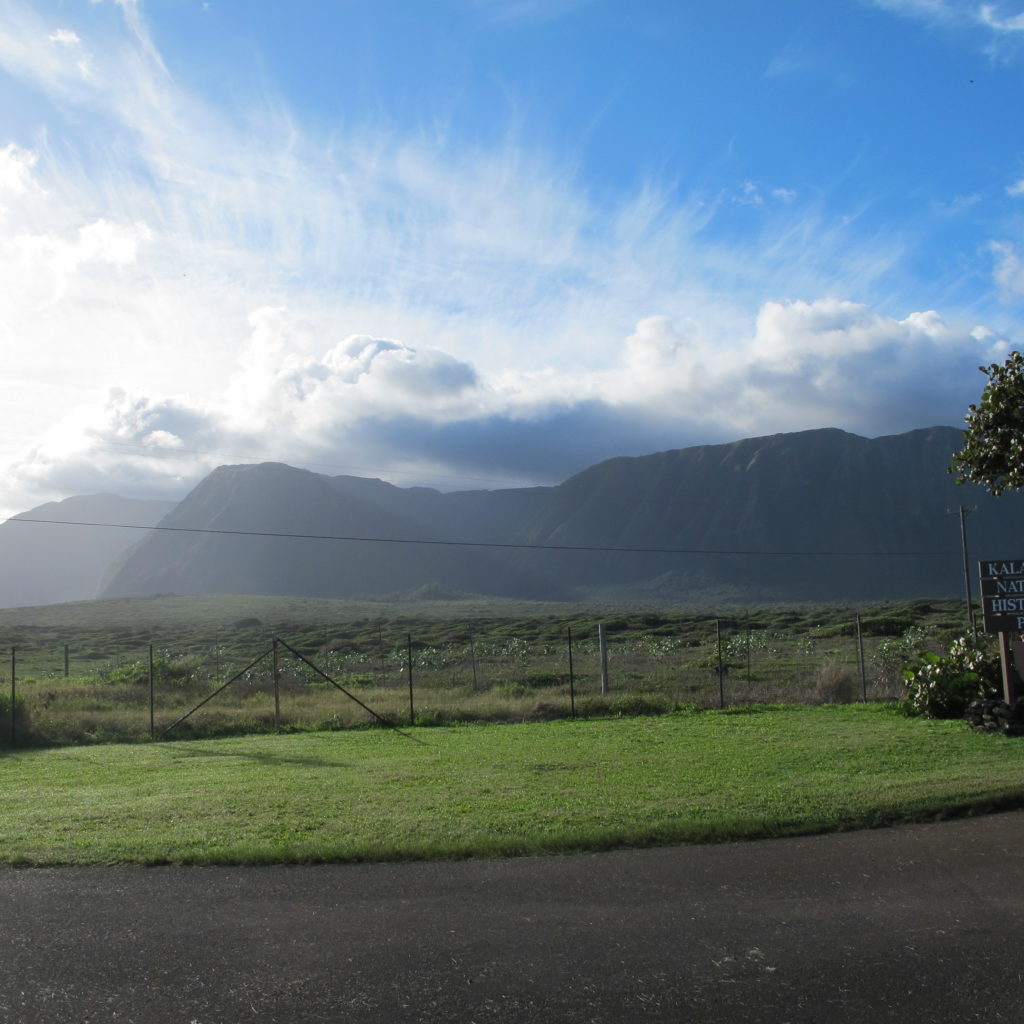
The world’s highest sea cliffs isolate the small peninsula on Molokai’s north coast
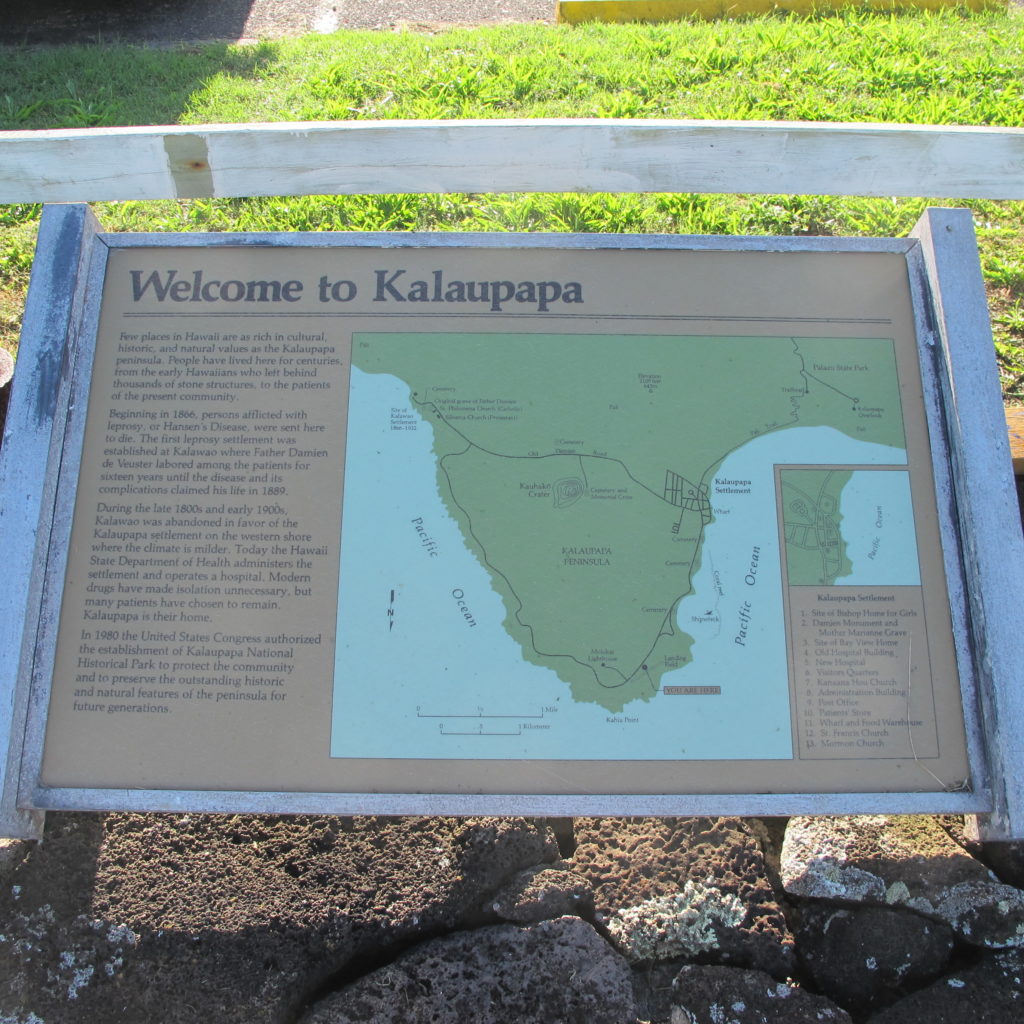
Kalaupapa history also includes great heroism and sacrifice, particularly by a Belgian priest, Father Damien de Veuster, and a nun, Sister Marianne Cope. Until he died from the disease in 1889, Father Damien devoted himself to the care and well-being of the colony’s patients for sixteen years. Sister Marianne spent the last thirty-five years of her life in service to leprosy patients. She served Kalaupapa’s residents for thirty of those years before her death of natural causes in 1918. The Catholic Church canonized Father Damien in 2009 and Sister Marianne in 2012. They remain an inspiration to those of all faiths for their selfless dedication to others.
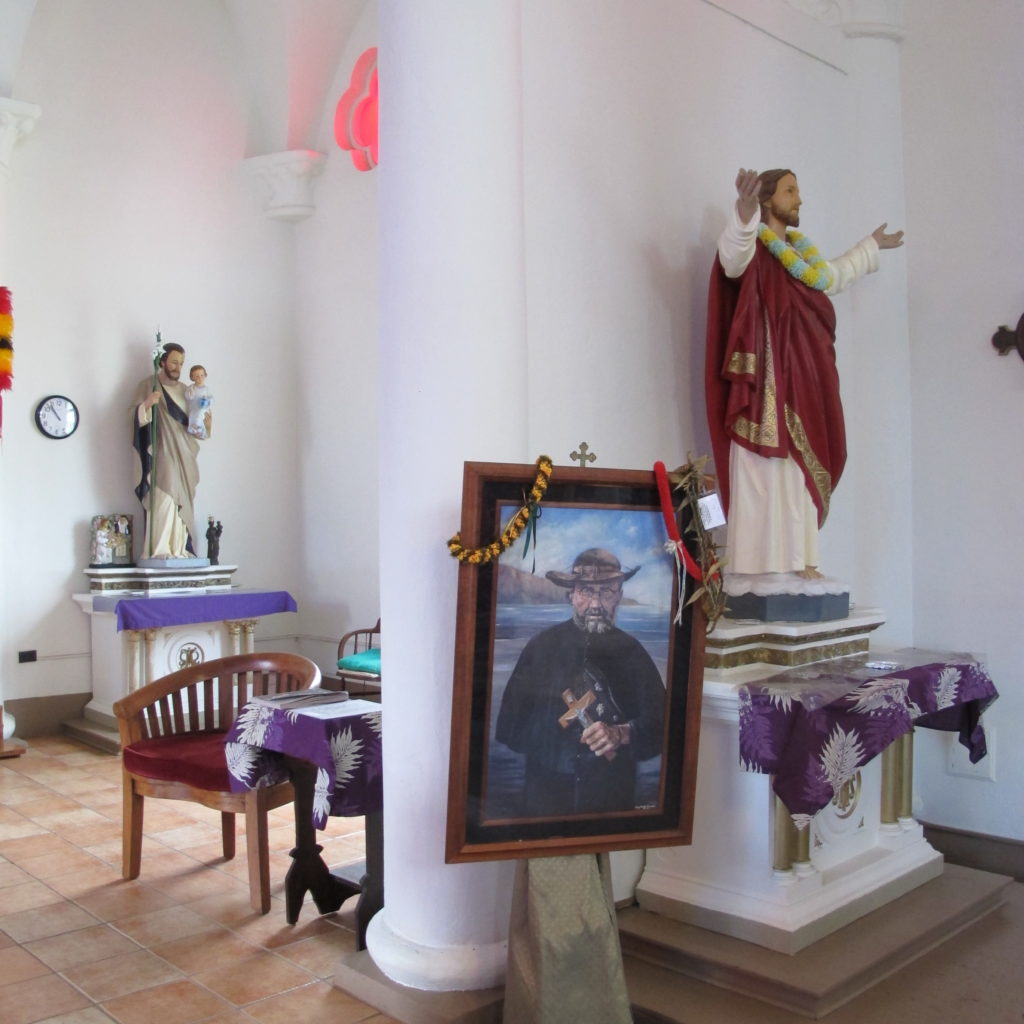
Father Damien
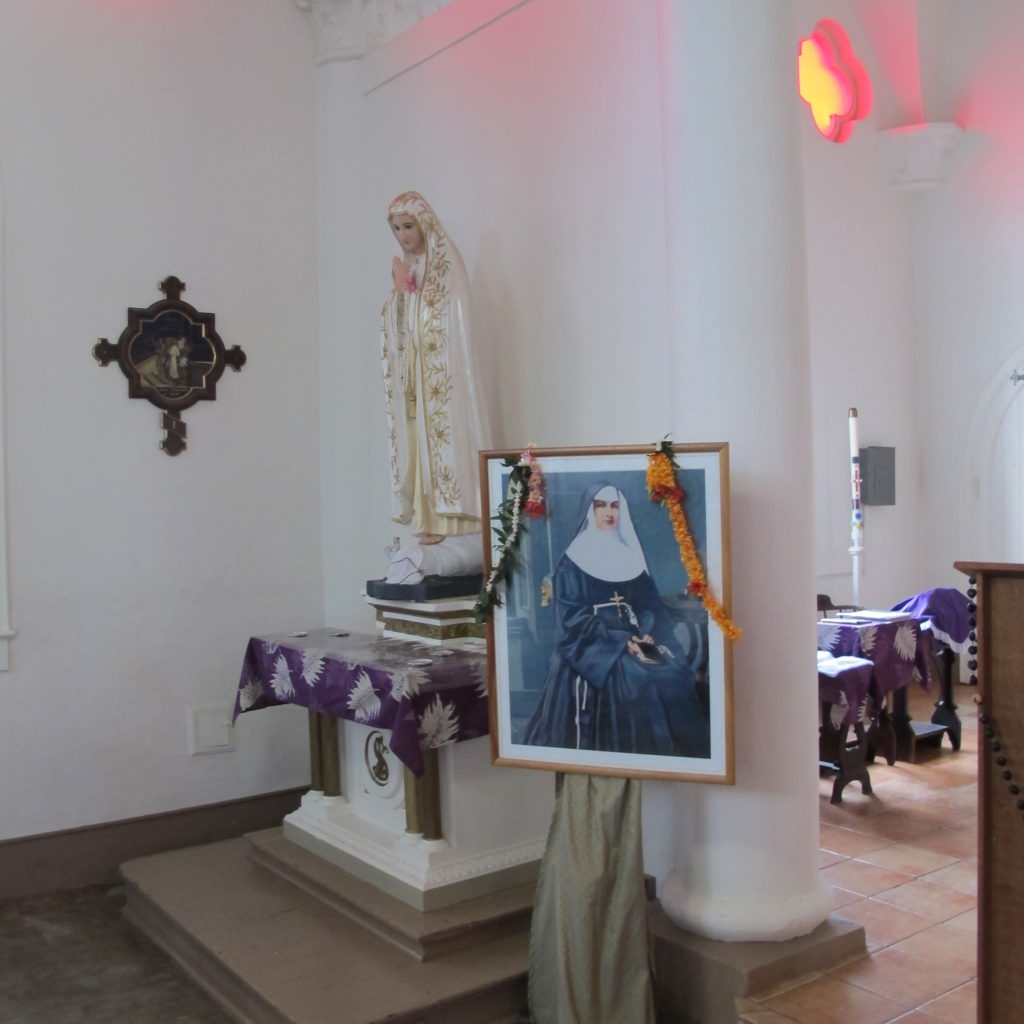
Sister Marianne
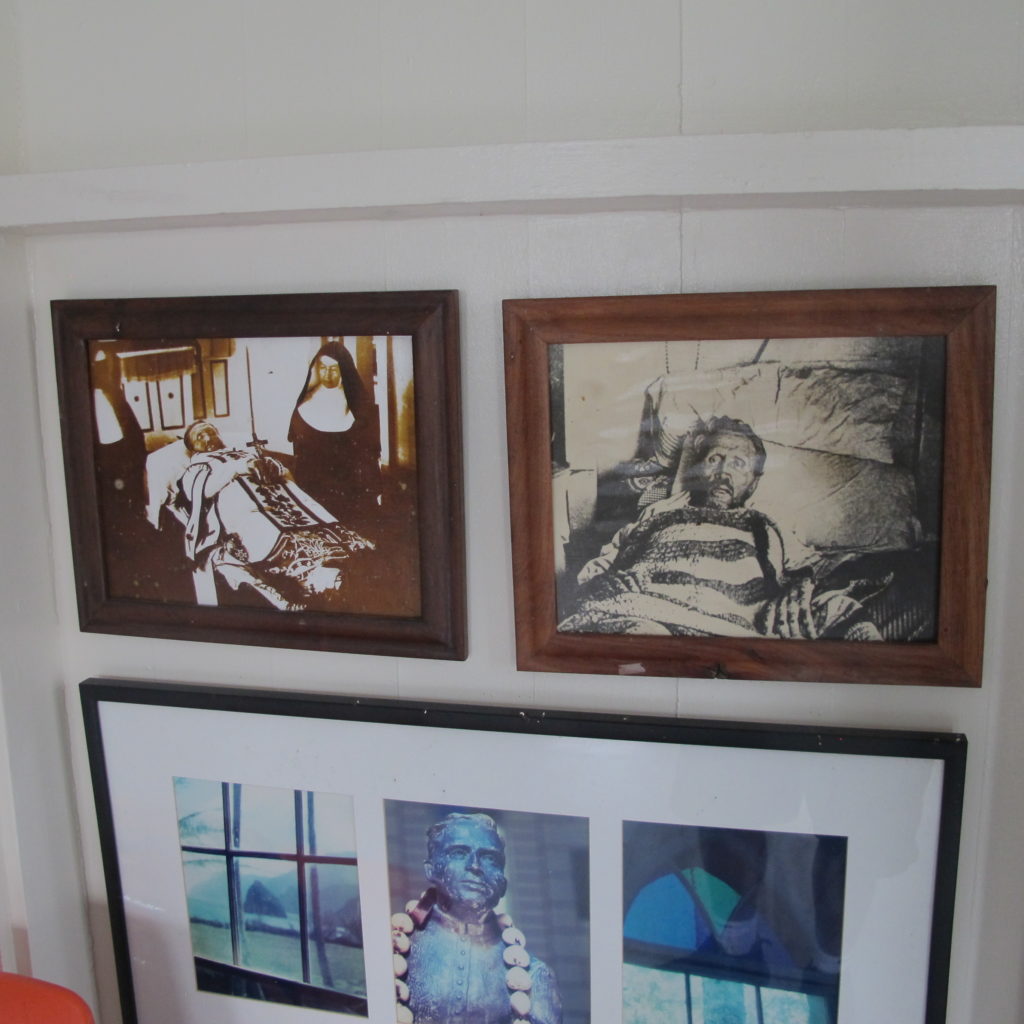
Father Damien with Sister Marianne, who cared for him after he became ill, shortly before he died of Hanson’s Disease
Kalaupapa remains a closed community. Visitors must pay a fee and join a guided tour. The peninsula can be accessed by mule or foot on the cliff trail, or via plane from Honolulu or topside Molokai. Our plane stops at the topside airport before continuing to Kalaupapa. Our tour guide Steve arrives to pick me up in a minivan a half hour after the plane lands. We drive to the base of the cliffs on the west side of the peninsula to await a guest joining the tour after hiking the trail. A young man named Duy, who’s touring Hawaii on the young adventurer plan, joins us as we watch several mules emerge from the end of the trail carrying other guests. The mule riders are with another tour, so we leave them and begin our exploration of the peninsula.
Only nine resident-patients remain in the Kalaupapa settlement on the peninsula’s west side. Most residents elected to stay, considering the place their home after travel restrictions ended in 1969. Everyday life here moves slow and services are few, with around one hundred village residents at any one time. Common yet scarce sundries and supplies are purchased at the small local general store restricted to residents. Each November the settlement receives a barge. Receiving a large appliance or a major car part can be a yearlong process.
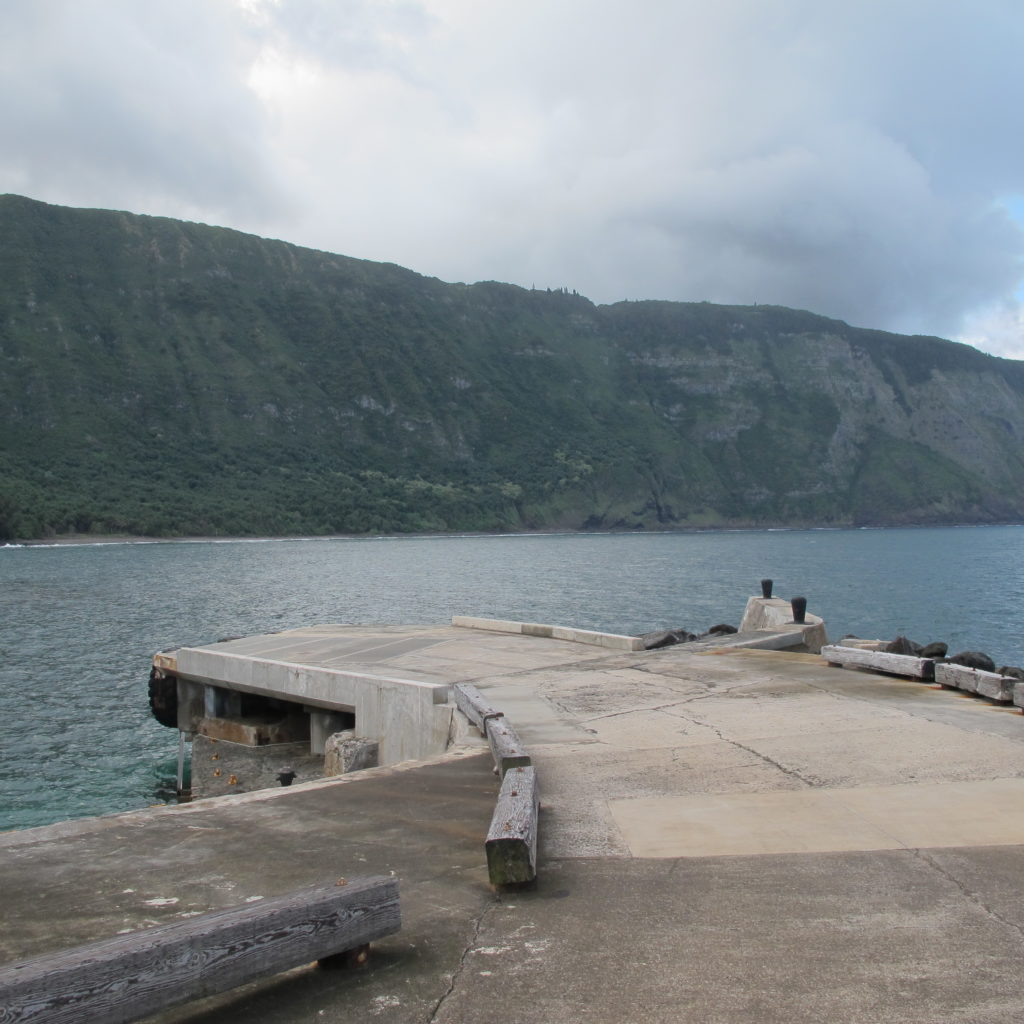
Kalaupapa settlement dock receives a barge each November for larger items
Steve drives us past the Kauhako Crater, the peninsula’s highest point and a remnant of the offshore volcano that created this place. He continues to the original east side village, called the Kalawao Settlement. At the turn of the twentieth century, residents moved to the west side Kalaupapa Settlement for its milder weather. True to form, a heavy rain falls during most of our time on the eastern side, barely leaving time for pictures of the stunningly beautiful pali (cliffs) towering over the eastern peninsula and rocky shore. Cut with large ravines and adorned with lush green foliage above and anywhere on the rocky face that plants can gain a foothold, the east side cliffs soar into the sky high above the pounding surf. We finish our time in Kalawao listening to the pouring rain from inside one of the peninsula’s oldest churches. I ask about the holes in the church’s raised wooden floor at intervals among the pews. Those inflicted with Hansen’s Disease produce excessive phlegm and regularly cough. Patients used a rolled leaf or plant stem to direct waste through the holes.
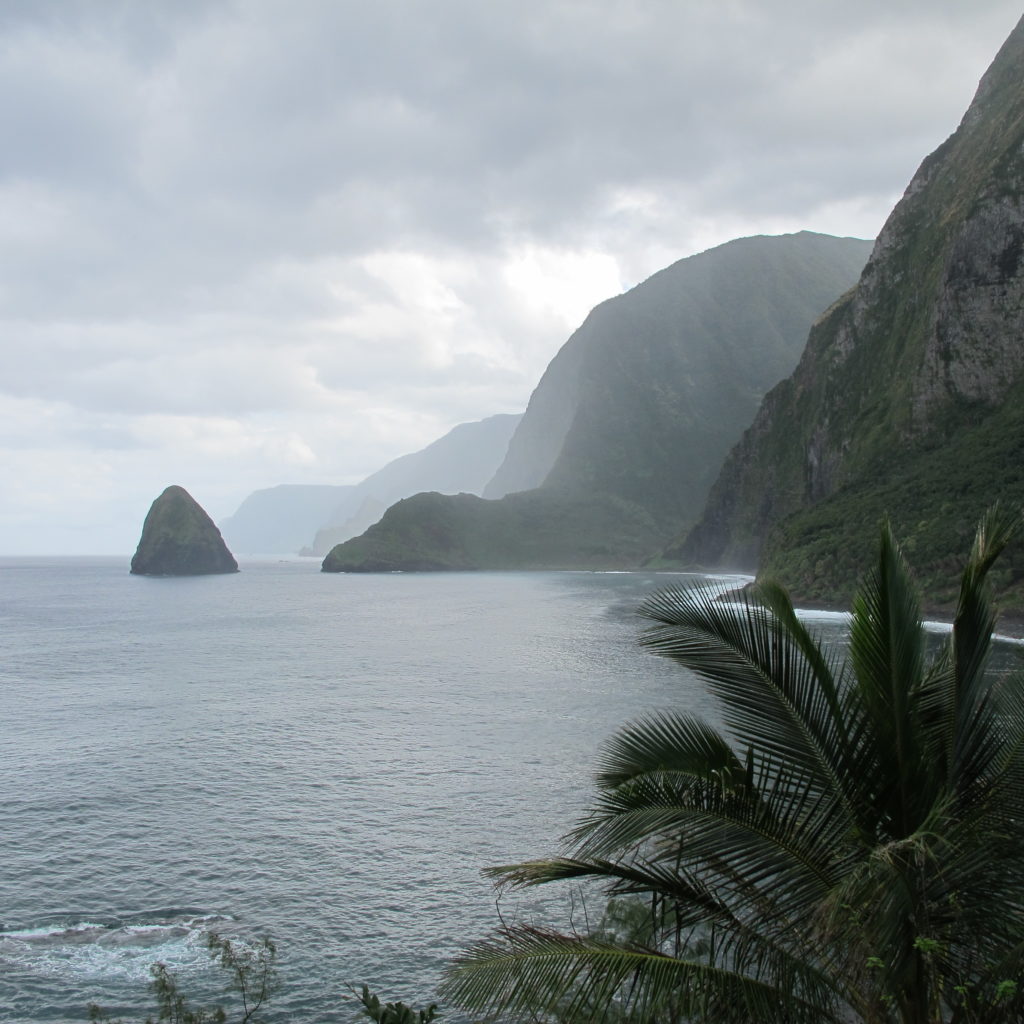
Pounding surf on the rocks below 3,000 foot cliffs seems to never abate
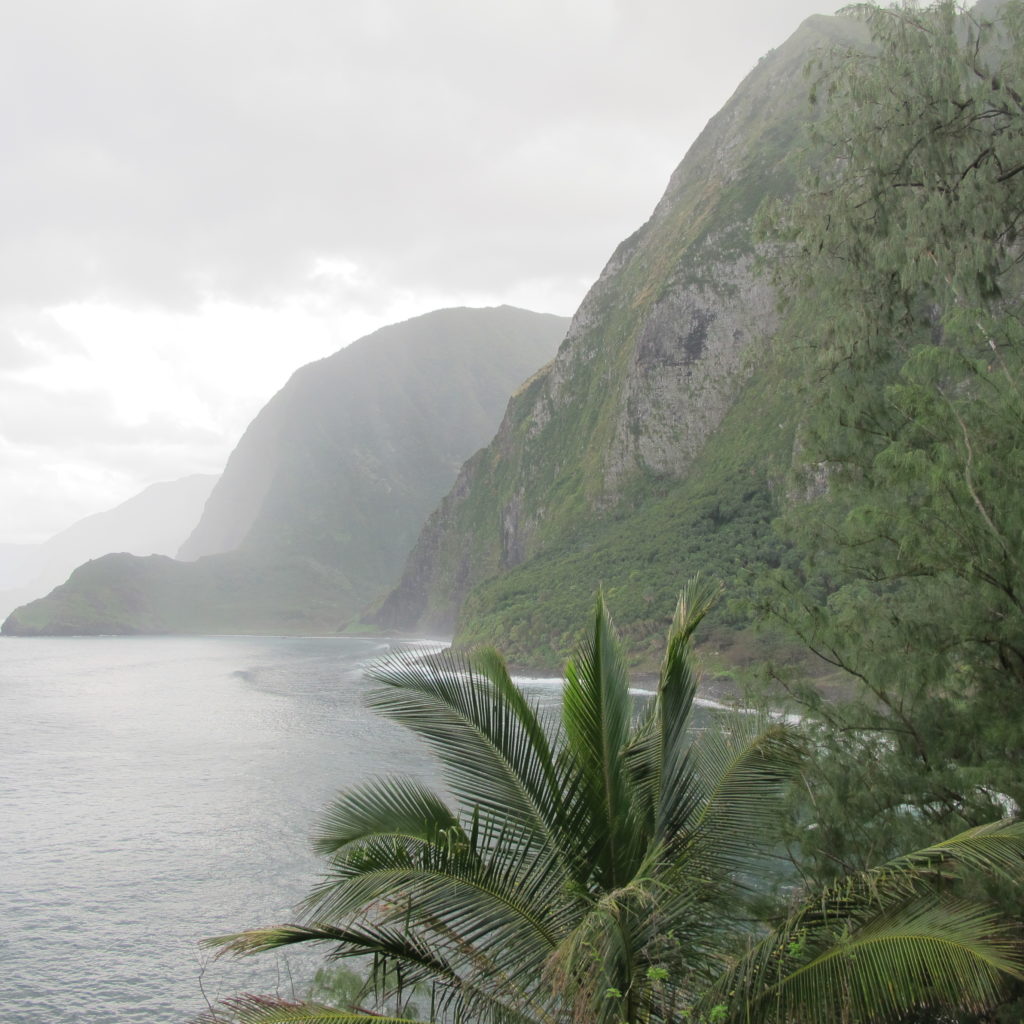
The cliffs above the Kalawao Settlement on the peninsula’s east side soar over 3,100 feet above the Pacific Ocean
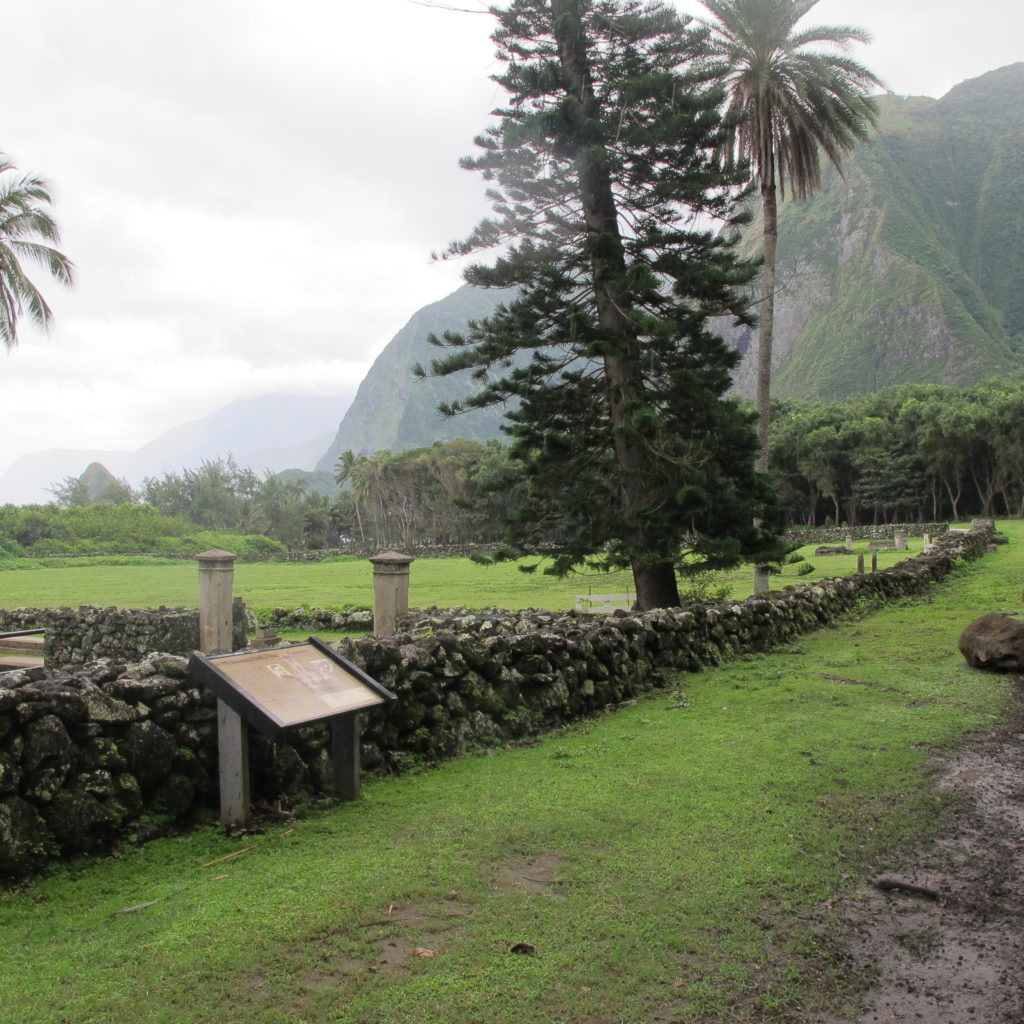
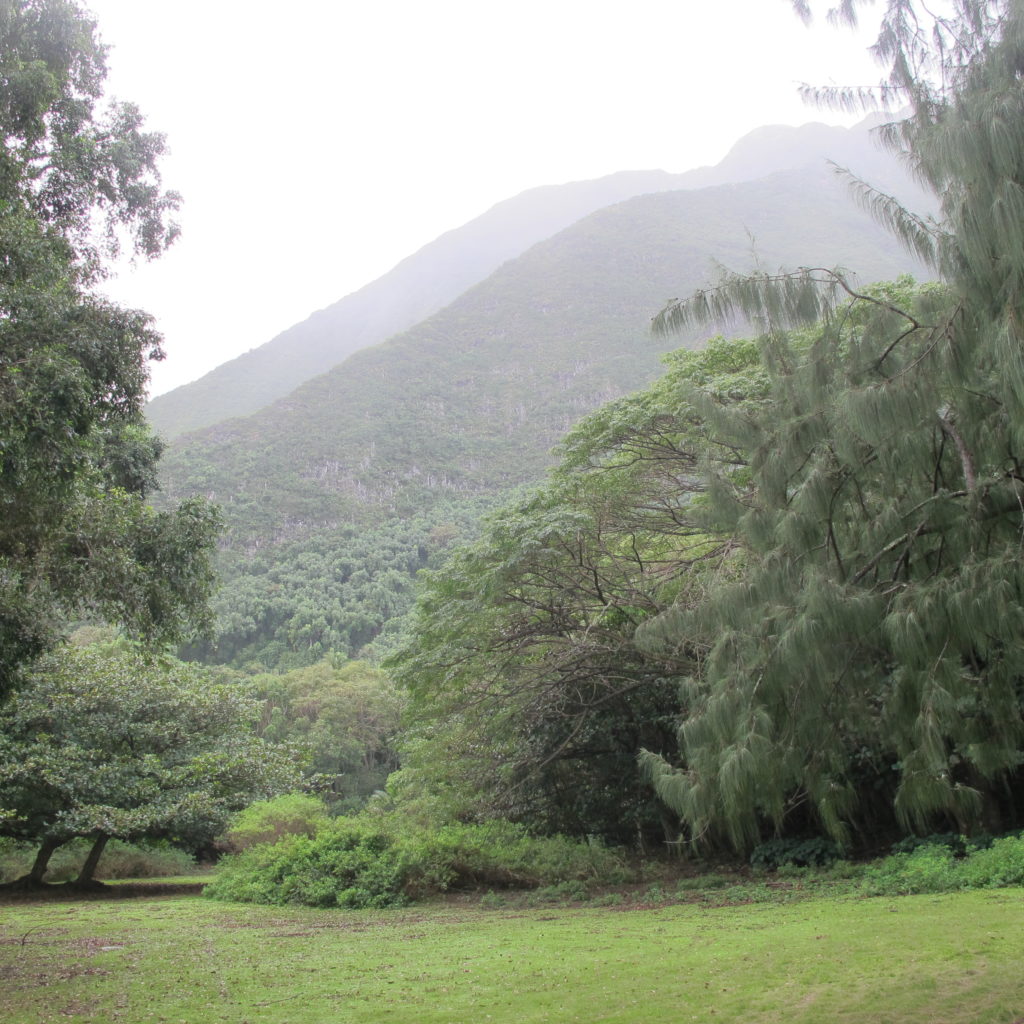
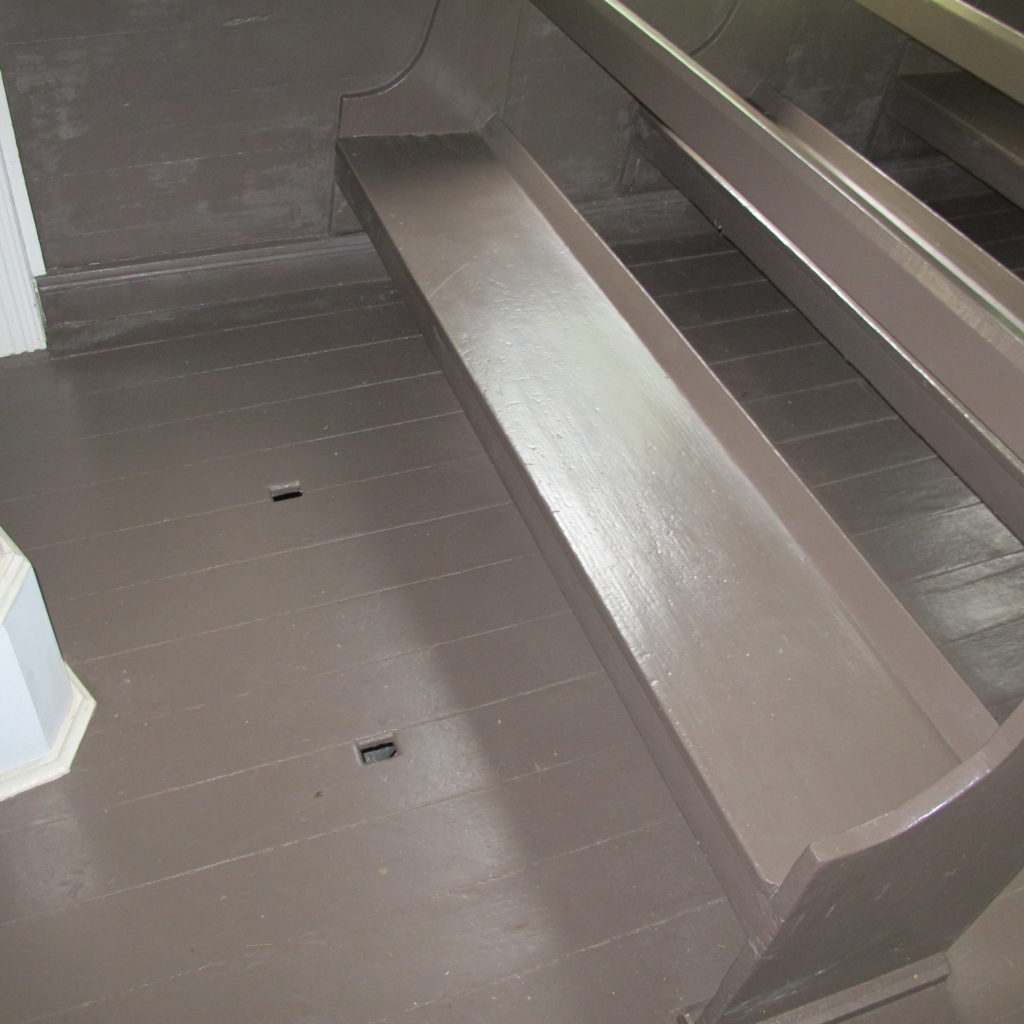
Holes in the church floor
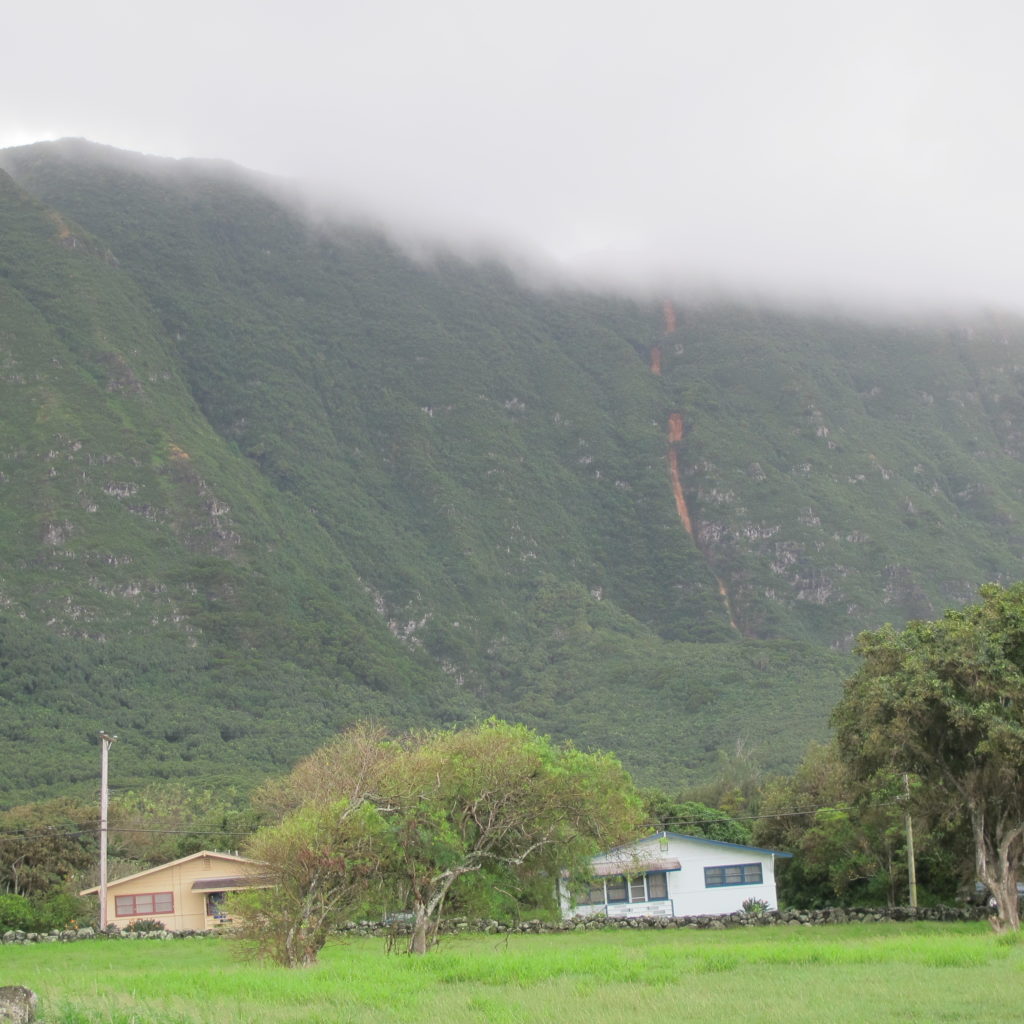
Returning to the Kalaupapa Settlement, our tour brings us to The Bishop Home for Girls, established by Mother Marianne Cope. Monuments to Sister Marianne and Father Damien adorn the grounds. The home’s current manager, Sister Madeline Chin, talks to us in the chapel about life at the home among the Sisters of St. Francis and the legacy of Saint Marianne Cope, Beloved Mother of Outcasts. I find myself moved by this place. Kalaupapa is heartbreaking for its story, breathtaking for its scenery, inspirational for its heroism, and thoroughly unforgettable.
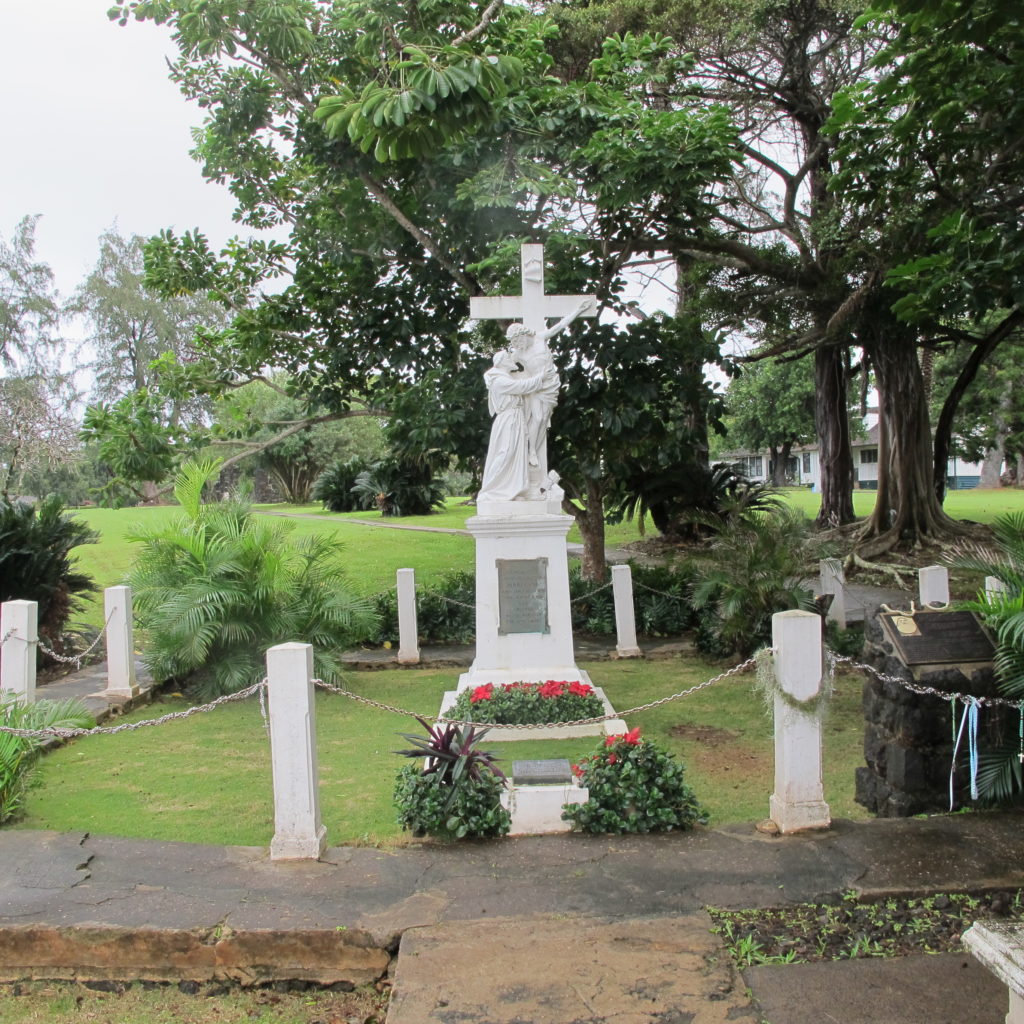
Memorial to Saint Marianne, Beloved Mother of Outcasts, at the Bishop Home for Girls
